The real question any golfer should ever be asking is why is MOI important in golf? Look, if you’re a beginner, high-handicapper, senior, or even a female golfer, then your topmost priority is to make sure the golf clubs you currently own are highly forgiving. This way, the chances of hitting the sweet spot for striking away are the most likely. And that can only be achieved through high MOI.
But then MOI is not the same across all models and types of clubs. So achieving consistency becomes, if not impossible, then very, very challenging. On the other hand, if MOI is the same in all the golf clubs of your set, consistency is impelled to improve since every club demands pretty much the same attempt in terms of swing.
Now let’s get to the part where I tell you more specific details about MOI. What is MOI in golf in the first place? What form does it take? What technology is it made of? How and where is it placed/positioned? These are questions that almost always pop into the head when buying golf clubs, any golf clubs. So let’s once and for all find out the right answers!
In This Post
- Golf MOI – What It Is, What It Means, What It Does
- High and Low MOI – What Is Better for You?
- MOI In Driver/Fairway Wood
- MOI In Iron/Wedge
- MOI In Putter
- How Do Manufacturers of Golf Clubs Boost MOI?
- Should MOI Affect How You Choose Your Golf Clubs? (if yes, then how much?)
- Commonly Asked Questions – Moment of Inertia (MOI)
- Winding Up…
Golf MOI – What It Is, What It Means, What It Does
MOI – Moment of Inertia.
It’s the measure of how resistant the head of the golf club is to twisting. MOI in measured in grams per centimeter square (g/cm²). A higher MOI rating = more resistance of the clubhead to twisting. And the more it’s twist-resistant, the more forgiving the club becomes. So can it be said then that high MOI in golf is simply the best thing? Keep reading to find out…
When your golf club toe comes in contact with the ball, the clubface twists open. And when the heel instead of the toe touches the golf ball, the face twists closed. Either way, the ball flight goes offline and even distance gets minimized. Conversely, with high MOI, the twisting action is controlled to prevent mis-hits from taking form and shape.
For example, in a golf driver, the CG (center of gravity) is deliberately and strategically placed back and low. Because with a CG positioning like that (where the weight is a considerable distance away from that clubface), there’s not much twisting upon impact.
And this is how the driver head becomes extremely forgiving and, as an outcome, able to generate a higher launch and more spin.
High and Low MOI – What Is Better for You?
When one thing works for someone doesn’t mean everyone’s going to benefit from it. High MOI may be one of the prerequisites for the golf club to be highly forgiving but then NOT ALL players want their clubs to be that forgiving.
Tour-level golfers, for instance, often prefer less MOI simply because less clubface twisting hinders their talent to intentionally hit a draw or fade.
Meaning highly-skilled golfers expect more workability from their equipment. Now you know why they go for sleek cavity-back and blade irons? For an experienced player, generating well-controlled mis-hits just to advantageously exploit launch and spin is both essential and easily attainable for veering the shot to the right or left. But if high MOI is a part of that manipulation, then everything goes for a toss.
Now what lies on the other side of the coin is high MOI built for the much-needed forgiveness that golfers with less experience expect. With high MOI, stability at impact improves, so you don’t end up losing ball speed even when you produce an off-center shot.
So Who Should Choose High MOI?
If you want your golf club to be less punishing because you often tend to hit off-center (because of slow swing speed and/or high handicap), high MOI is for you. With more forgiveness, you can find all the fairways you like!
Stay away from low MOI since it may give you distance gains but with much less control. In such a scenario, your mis-hits turn into exaggerated blunders and wilder-shaped shots.
And Who Should Choose Low MOI?
If ball-striking is not a problem for you, low MOI lets you achieve the distance you want as well as not restrict your ball-shaping abilities. That makes low MOI perfect for low-handicap golfers.
But with high MOI, your dream of shaping your drives or any other golf shot never turns to fruition because high MOI jeopardizes your capacity to shape any shot.
MOI In Driver/Fairway Wood
Hitting tee shots consistently down that fairway has a direct connection with the MOI of your golf club. With high MOI, where the weight is placed farthest away from the clubface, twisting is minimized. This means the clubhead is squared at impact for higher launch and topspin despite an imperfect swing.
The thing about golf drivers is that they’re not the easiest to hit because of the long shaft and small sweet spot. But then top brands like TaylorMade, Callaway, Cleveland, Wilson, etc. are pushing the very limits of MOI just to make the driver easier to hit for beginner and amateur golfers. As for limiting MOI, that’s for the pros!
The same goes for the design/construction of fairway woods AND hybrids. Even in these, the club weighting has its place at the back (with a larger head and deeper CG) for increasing MOI and, ultimately, forgiveness.
MOI In Iron/Wedge
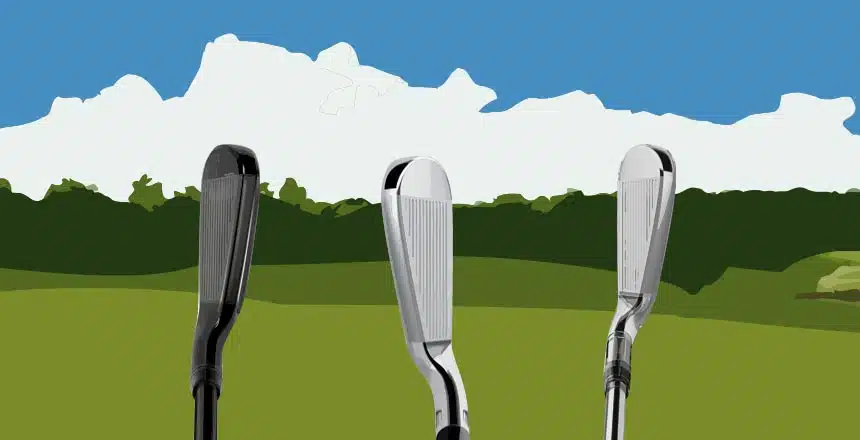
Before, golf irons had a more traditional blade-like design (low MOI). So a poorly hit shot with an iron back then meant a HUGE miss. However, and thankfully, that’s not how irons work NOW.
Now, even if your swing speed is average or below average, your iron shot struck low on the face or simply off-center also travels farther and straighter. These types of extremely forgiving irons, just the perfect choice for senior golfers’ deteriorating swing speed, get the ball around or on the green the most easily.
But then as your consistency improves, you should consider switching from such larger headed, chunkier cavity-backs to the blade-style if you want to control spin and hit more fades and draws (the former with its high MOI doesn’t let you do that because it only prioritizes distance gains even when mis-hits are produced).
And the same can be said about wedges. Blade-style golf wedges are more “workable” while the cavity-back, high-MOI design is more “forgiving.” Although with a shorter golf club like a wedge, the whole idea of forgiveness is different in that it means attacking flags rather than producing a straighter ball flight. So wedge MOI is not such a big deal.
MOI In Putter
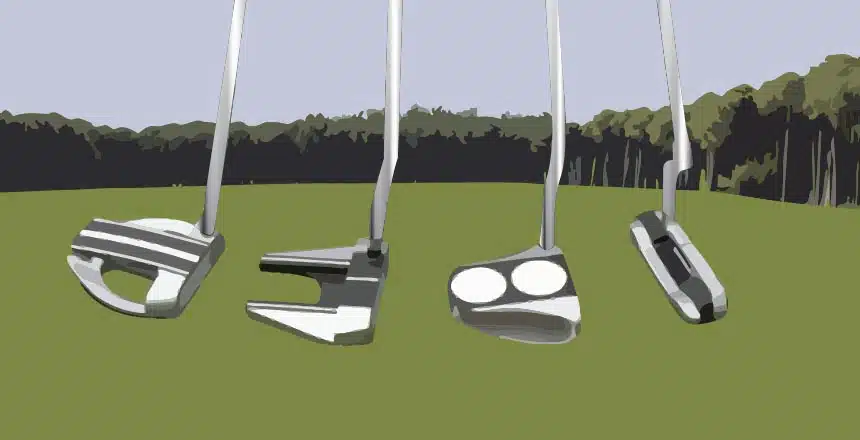
At the risk of sounding conceited, I’m still going to mention that I consider myself to be a veteran golfer at this point. And I have my years and years of Tournament golfing experience to vouch for that.
So anyway, what I’m trying to say is that I don’t understand why MOI is so underrated in putters because it really shouldn’t be since 30-percent to 40-percent of shots (and sometimes even more) are hit with that very golf club. So it better be well-equipped to get your golf ball closer and closer to the target hole.
Blade putters (the original kind) are for the arc putting technique. Whereas mallet putters favor the straight back, straight through approach. And it’s these, due to their larger size, that are a lot more forgiving (sink more putts) on imperfect putts.
However, mallet putters do not still seem to be the most merciful. High-MOI putters, only in recent years, have managed to emerge as the most forgiving in golf. So much so that positive results are seen overnight!
How Do Manufacturers of Golf Clubs Boost MOI?
The most common and effective approach to increase MOI – placing weight around the perimeter (edges) of the clubhead. With super game improvement irons, this is exactly what makes them magnanimously forgiving.
The positioning of moveable weights around the perimeter adds value in terms of both forgiveness and accuracy on mis-hits. This type of structure also produces a higher flight with very little effort on your part.
Should MOI Affect How You Choose Your Golf Clubs? (if yes, then how much?)
Ask yourself one very simple question at this point… what’s your biggest concern with your game currently? Is it not being able to hit accurate, consistent shots? In that case, high MOI plays a crucial role when it comes to what golf clubs to purchase.
On the other hand, is shaping your shots a more important issue with you? Because high MOI doesn’t allow you to do that but low MOI does. On top of that, if your swing is strong and fast, then low MOI also gives you the extra distance.
Commonly Asked Questions – Moment of Inertia (MOI)
What Is the Difference Between MOI and CG?
CG or COG means Center of Gravity. MOI means Moment of Inertia. The former controls launch and spin conditions. When CG is placed farther back and lower, it increases MOI and leads to a higher launch. In simpler words, more forgiveness on off-center shots.
How Can MOI Be Decreased?
Always talk about increasing MOI, so what of reducing the MOI for being able to shape your shots to create a fade or draw purposely? Golf club manufacturing brands make the clubs lighter to keep the MOI low. Versus high-MOI golf clubs that are often heavier and longer, which explains why drivers, since they’re the longest of all, are equipped with more MOI.
Is There Any MOI Limit?
According to R&A and USGA, the max. legal MOI limit is 5,900 g/cm² (grams per centimeter square).
Winding Up…
It’s a pretty easy and straightforward rule – higher MOI = more forgiveness. This applies to golf drivers, woods, hybrids, irons, wedges, and putters.
It’s just that with wedges and putters, forgiveness doesn’t mean hitting straighter and longer. With wedges, forgiveness has more to do with attacking flags while high-MOI putters are the most forgiving in that they sink more putts.
Many golfers, beginners especially, do not take MOI into consideration when choosing clubs, let alone knowing what MOI actually means and what it really does. Mis-hits between tee and green are drastically exonerated if your golf clubs have a high MOI rating.
But then that also means less workability from your set. However, that’s a later concern when distance and consistency are no more problematic areas for you. Because then you can safely make the switch from high MOI to low MOI since it’s the latter that helps with shot-shaping!

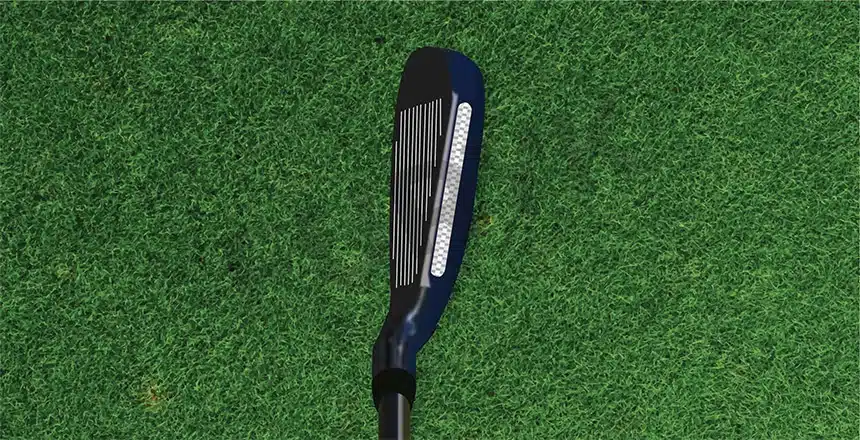
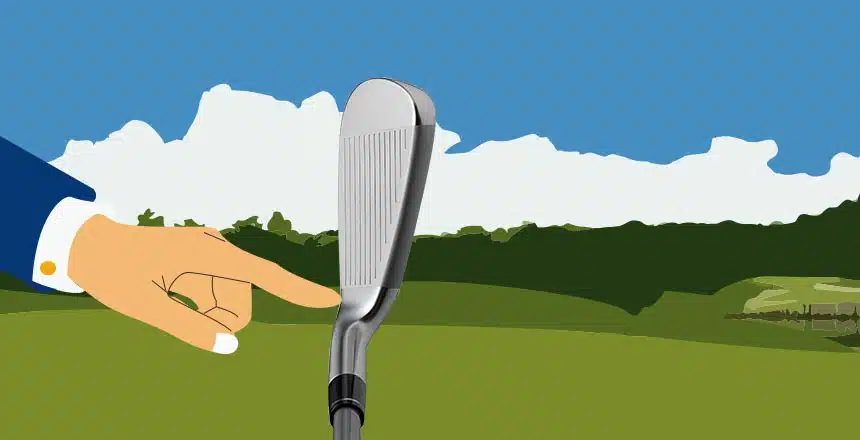

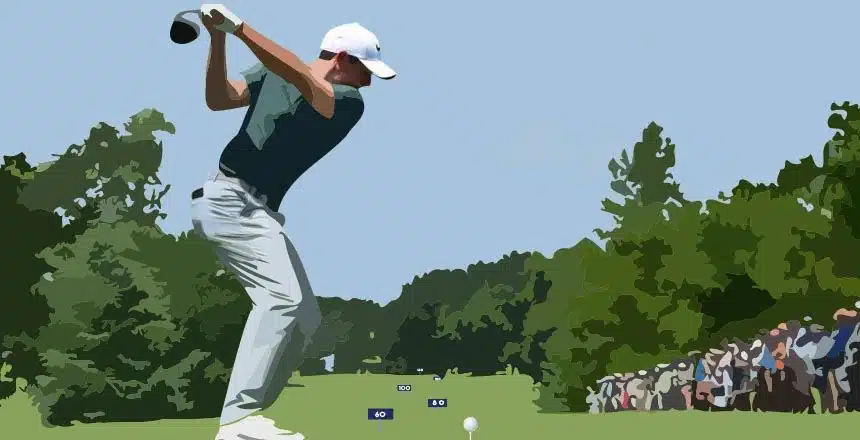
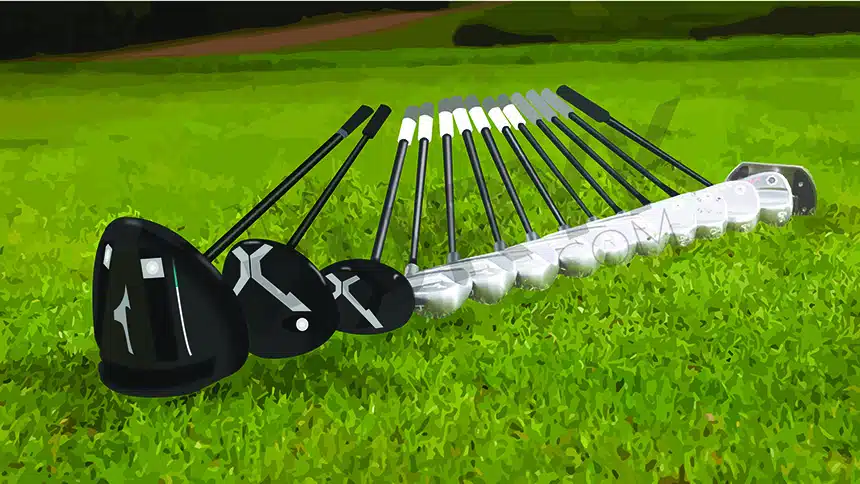
how do you determine what the moi of a putter is? is it marked on the club?